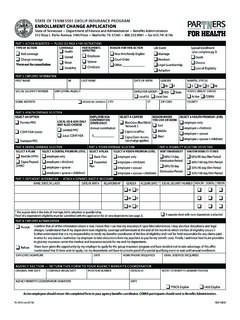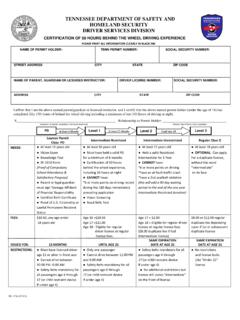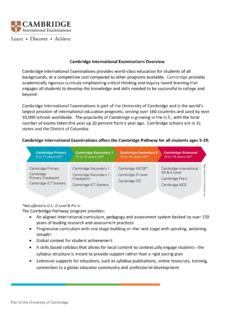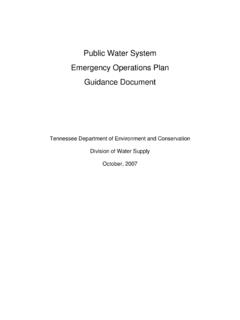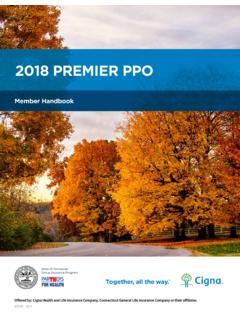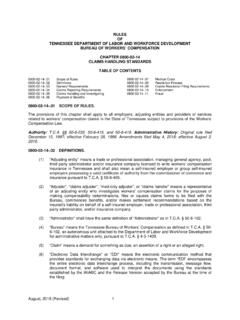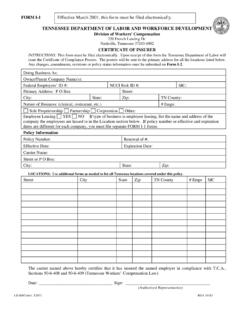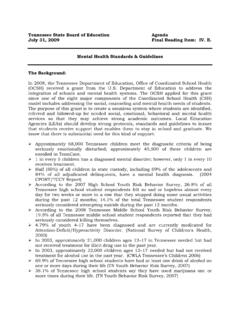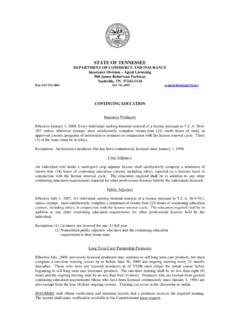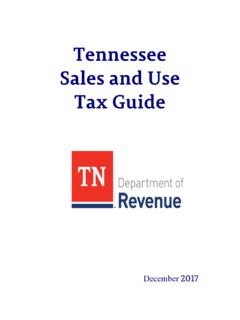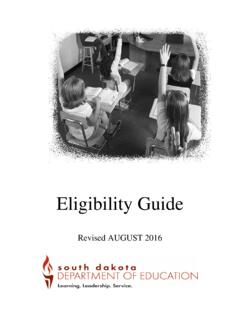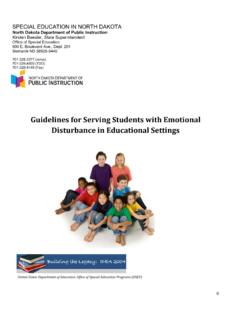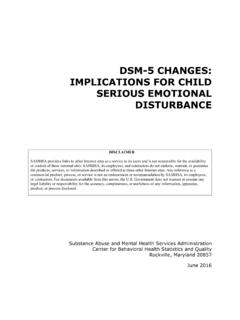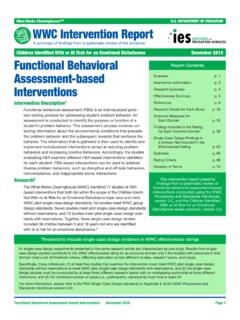Transcription of Emotional Disturbance Evaluation Guidance - Tennessee
1 Emotional Disturbance Evaluation Guidance Tennessee Department of Education | Revised November 2018 Acknowledgements The department recognizes and appreciates all of the listed educational professionals, higher education faculty, parents, and advocates who contributed to the development of the Emotional Disturbance Evaluation Guidance for their time and effort. Patti Wilson Clarksville Montgomery County Schools Erika Christianson Williamson County Schools Angela Collins Hamilton County Schools Michelle Hopkins Vanderbilt Kennedy Center/ TRIAD Ashley Clark Clarksville Montgomery County Schools Andrea Ditmore Oak Ridge Schools Robin Faircloth Houston County Schools Leslie Jones The ARC of Tennessee (West) Laria Richardson The ARC of Tennessee (Middle TN)
2 Lisa Rodden-Perinka Wilson County Schools Melanie Schuele Vanderbilt University Cathy Brooks Disability Rights of Tennessee Jenny Williams Tennessee Disability Coalition Ron Carlini Knox County Schools Pamela Guess University of Tennessee at Chattanooga Alison Gauld Tennessee Department of Education Nathan Travis Tennessee Department of Education Theresa Nicholls Tennessee Department of Education Joanna Bivins Tennessee Department of Education Kristen McKeever Tennessee Department of Education 2 Table of Contents Introduction Section I: Tennessee Definition Section II: Pre-referral and Referral Considerations Section III: Comprehensive Evaluation Section IV: Eligibility Considerations Section V: Re- Evaluation Considerations Appendix A: TN Assessment Instrument Selection Form Appendix B: Assessments Appendix C: Sample Release of Information Appendix D: Medical Information Form Medical Information Form Appendix E: Sample Developmental History Appendix F.
3 Assessment Documentation Form 3 Introduction This document is intended to provide school teams Guidance when planning for student needs, considering referrals for evaluations, and completing evaluations/re-evaluations for educational disabilities. Disability definitions and required Evaluation procedures and can be found individually on the Tennessee Department of Education website (here).1 Every educational disability has a state definition, found in the TN Board of Education Rules and Regulations Chapter 0520-01-09,2 and a federal definition included in the Individuals with Disabilities Education Act (IDEA).
4 While states are allowed to further operationally define and establish criteria for disability categories, states are responsible to meet the needs of students based on IDEA s definition. Both definitions are provided for comparison and to ensure teams are aware of federal regulations. The student must be evaluated in accordance with IDEA Part B regulations, and such an Evaluation must consider the student s individual needs, must be conducted by a multidisciplinary team with at least one teacher or other specialist with knowledge in the area of suspected disability, and must not rely upon a single procedure as the sole criterion for determining the existence of a disability.
5 Both nonacademic and academic interests must comprise a multidisciplinary team determination, and while Tennessee criteria is used, the team possess the ultimate authority to make IDEA Definition of Emotional Disturbance Per 34 (c)(4)(i) Emotional Disturbance means a condition exhibiting one or more of the following characteristics over a long period of time and to a marked degree that adversely affects a child's educational performance: (A) An inability to learn that cannot be explained by intellectual, sensory, or health factors.
6 (B) An inability to build or maintain satisfactory interpersonal relationships with peers and teachers. (C) Inappropriate types of behavior or feelings under normal circumstances. (D) A general pervasive mood of unhappiness or depression. (E) A tendency to develop physical symptoms or fears associated with personal or school problems. (ii) Emotional Disturbance includes schizophrenia. The term does not apply to children who are socially maladjusted, unless it is determined that they have an Emotional Disturbance under paragraph (c)(4)(i) of this section.
7 1 2 3 Office of Special Education Programming Letter to Pawlisch, 24 IDELR 959 4 Section I: Tennessee Definition Tennessee Definition of Emotional Disturbance Emotional Disturbance means a condition exhibiting one or more of the following characteristics over a long period of time and to a marked degree that adversely affects a child's educational performance: A. An inability to learn that cannot be explained by intellectual, sensory, or health factors B. An inability to build or maintain satisfactory interpersonal relationships with peers and teachers C.
8 Inappropriate types of behavior or feelings under normal circumstances D. A general pervasive mood of unhappiness or depression E. A tendency to develop physical symptoms or fears associated with personal or school problems Emotional Disturbance includes schizophrenia. The term does not apply to children who are socially maladjusted, unless it is determined that they have an Emotional Disturbance . What does this mean? Emotional Disturbance is an umbrella term for different, but related, social- Emotional deficits and disorders. These significant mental health and/or behavior issues manifest as dysregulation in thoughts, feelings, and/or behaviors.
9 Simply put, students with an Emotional Disturbance demonstrate extreme ranges of emotions and/or behaviors that, without the extreme nature, would be considered normal in all children and adolescents. Students with an Emotional Disturbance have less ability to regulate their emotions and/or behaviors. Identification as having an Emotional Disturbance does not translate into any specific diagnosis(es). Although diagnosis(es) of Emotional and/or behavioral disorders may assist teams in identifying deficits that are present to a marked degree, have persisted over an extended period of time, and/or have an adverse effect on a student s educational performance.
10 When analyzing the definition of Emotional Disturbance , nine areas typically require clarification: to a marked degree, adverse effect, long period of time, inability to learn that cannot be explained by intellectual, sensory, or health factors inability to build or maintain satisfactory interpersonal relationships with peers and teachers inappropriate types of behavior or feelings under normal circumstances, 5 a tendency to develop physical symptoms or fears associated with personal or school problems.
